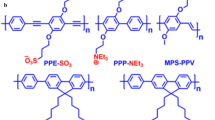Abstract
In recent years, with the development of molecular imprinting technology, the imprinting sites, nature of imprinting, selection of functional monomers, cross-linking agents, solvents, and the optimization of the imprinting ratio are all the hot spots of researchers. In this work, the theoretical prediction of the self-assembly system of formaldehyde (HCHO) molecularly imprinted polymer was carried out by the B3LYP/6-31 G(d,p) method. The geometric configuration and active sites of the stable complex of HCHO and methacrylic acid (MAA) were analyzed. The selection of the imprinting ratios, cross-linking agents, and solvents was discussed. The topological properties of electron density of HCHO-MAA complex were considered by using the topological analysis method of chemical bond electron density based on valence bond theory. This study cannot only reveal the relationship between the imprinting mechanism of molecularly imprinted polymers and the molecular structure and properties of molecularly imprinted polymers but also provide valuable reference for the design and preparation of molecularly imprinted polymers.




Similar content being viewed by others
References
Pereira TFD, da Silva ATM, Borges KB, Nascimento Jr CS (2019). J. Mol. Struct. 1177:101–106
Zhang F, Luo LH, Gong H, Chen C, Cai C (2018). RSC Adv. 8(56):32262–32268
Liang F, Liu YJ, Zhou XD, Hu JM (2005). J. Colloid Interface Sci. 284(2):378–382
Tang XH, Raskin JP, Lahem D, Krumpmann A, Decroly A, Debliquy M (2017). Sens 17(4):675
Zhang K, Zhou TC, Kettisen K, Ye L, Bülow L (2019). Talanta 199:27–31
Pisarev OA, Polyakova IV (2018). React. Funct. Polym. 130:98–110
Santos WJ, Lima PR, Tarley CR, Höehr NF, Kubota LT (2009). Anal. Chim. Acta 631(2):170–176
Wang P, Sun X, Su X, Wang T (2016). Analyst:141. https://doi.org/10.1039/C5AN01993A
Peng Y, Xie Y, Luo J, Nie L, Chen Y, Chen L (2010). Anal. Chim. Acta 674(2):190–200
Wubulikasimu M, Muhammad T, Imerhasan M, Hudaberdi N, Peng X (2019). RSC Adv. 9(12):6779–6784
Hijazi HY, Bottaro CS (2018). Analyst 143:1117–1123
Chaowana R, Bunkoed O (2019). Anal. Bioanal. Chem. 411(23):6081–6090
Lai C, Zhou XX, Huang DL, Zeng GM, Cheng M, Qin L, Yi H, Zhang C, Xu P, Zhou CY, Wang RZ, Huang C (2018). J Taiwan Inst Chem E 91:517–531
Ahmadi F, Rezaei H, Tahvilian R (2012). J. Chromatogr. A 1270:9–19
Ahmadi F, Yawari E, Nikbakht M (2014). J. Chromatogr. A 1338:9–16
Javedan G, Shidfar F, Davoodi SH, Ajami M, Gorjipour F, Sureda A, Nabavi SM, Daglia M, Toroudi HP (2016). Mol. Nutr. Food Res. 60:2665–2677
Wang Y, Liu JB, Tang SS, Jin RF (2015). J. Sep. Sci. 38(15):2647–2654
Ahmadi F, Ahmadi J, Rahimi-Nasrabadi M (2011). J. Chromatogr. A 1218:7739–7747
Dai ZQ, Liu JB, Tang SS, Wang Y, Wang YM, Jin RF (2015). J. Mol. Model. 21(11):290
Silva CF, Borges KB, Nascimento CS (2019). J. Mol. Model. 25(104). https://doi.org/10.1007/s00894-019-3990-y
Yi Y, Adrjan B, Li J, Hu B, Szczepan R (2019). J. Mol. Model.:25(202). https://doi.org/10.1007/s00894-019-4090-8
Ueta I, Mochizuki S, Kawakubo S, Kuwabara T, Saito Y (2015). Anal. Sci. 31(2):99–103
Wu YC, Nie F, Tang ZH, Liu DQ (2014). Chin. J. Appl. Chem. 32(1):104–109
Li H, Lu CM, Xie F, Xu MM, Wang SS, Li ZP (2014). Chin. J. Appl. Chem. 42(06):885–890
Chaudhari A, Sahu PK, Lee SL (2005). Int. J. Quantum Chem. 101(1):67–72
Aqababa H, Tabandeh M, Tabatabaei M, Hasheminejad M, Emadi M (2013). Mater Sci Eng C 33(1):189–195
Chipanina NN, Shainyan BA, Sherstyannikova LV, Turchaninov VK (2004). Russ. J. Org. Chem. 40(3):301–306
Shakerzadeh E (2016). Physica E 78:1–9
Buczek A, Kupka T, Broda MA (2011). J. Mol. Model. 17(8):2029–2040
Wang YL, Liu JB, Sun JN, Tang SS, Jin RF (2013). Acta Polym. Sin. 12:1525–1530
Jeffrey GA (1999). J. Mol. Struct. 485–486:293–298
Liu JB, Wang GY, Tang SS, Gao Q, Liang DD, Jin RF (2018). J. Sep. Sci. 42(3):769–777
Liu JB, Wang Y, Tang SS, Gao Q (2017). New J. Chem. 41(22):13370–13376
Silva AF, Popelier PLA (2018). J. Mol. Model. 24(8):201
Bader RFW (1985). Acc. Chem. Res. 18(1):9–15
Acknowledgments
The Science and Technology Development Plan of Jilin Province (No.20200101018JC) and the Natural Science Fundation of Jilin Province in 2020 (Construction and application of formaldehyde molecularly imprinted QCM sensor) are gratefully acknowledged.
Author information
Authors and Affiliations
Corresponding authors
Additional information
Publisher’s note
Springer Nature remains neutral with regard to jurisdictional claims in published maps and institutional affiliations.
Electronic supplementary material
ESM 1
(DOCX 27 kb)
Rights and permissions
About this article
Cite this article
Zhao, W., Liu, J., Tang, S. et al. Theoretical research of molecular imprinted polymers formed from formaldehyde and methacrylic acid. J Mol Model 26, 88 (2020). https://doi.org/10.1007/s00894-020-04362-z
Received:
Accepted:
Published:
DOI: https://doi.org/10.1007/s00894-020-04362-z




